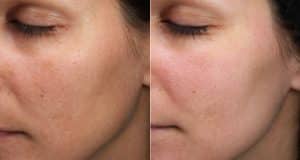
Is Moxi® Laser Treatment Right for You?
When considering any cosmetic treatment, it’s essential to determine if it’s the right fit for your skin and your goals. Moxi® Laser Treatment could be

Gone are the days of razers, hair removal creams, and painful waxing. Laser hair removal is growing in popularity throughout the years. Laser treatment saves you time and money in the long run because there is no need to constantly purchase razors or other hair removal products. In 6-8 sessions you will notice the elimination of hair follicles and the prevention of new hair growth. Not only are women and men looking for smooth, effortless soft skin, but also eliminating ingrown hairs with laser treatment.
Laser hair removal treatments use concentrated light to penetrate deep within the hair follicles. Removing unwanted hair from the face, underarms, forearms, legs, and bikini line (as well as any other part of the body except for near the eyes).
During treatment, a laser emits light that is absorbed by the pigment (melanin) in the hair. The light energy is converted to heat, which damages the hair-producing tube-shaped sacs (hair follicles) within the skin. As a result of treatment, the development of future hair growth will fully stop or slow down.
Ingrown hairs are very common for people who shave, tweeze, or wax unwanted hair. They occur when the shaved or tweezed hair begins to grow back into the skin rather than penetrating through. Thus, causing inflammation, discomfort, and little bumps. Dead skin can also clog the hair follicle which blocks the hair from being able to grow in the correct direction. Causing the hair to grow sideways underneath the skin.
An ingrown hair will often subside on its own. However, some choose to take it into their own hands to remove the trapped hair. Ingrown hairs can become infected which a doctor will need to look at and possibly remove.
Rather than killing the follicle altogether with laser, when you shave, tweeze, or wax you are only cutting or pulling the hair from the follicle. Allowing for new hairs to grow back. Although exfoliating can help remove dead skin cells and promote natural, and healthy hair growth, it can only do so much. Ingrown hairs can cause a condition known as post-inflammatory hyperpigmentation. Although this is a temporary reaction, it can induce a great deal of concern about one’s skin, particularly if it occurs on the face.
Laser hair removal is the most effective way to get rid of ingrown hairs quickly. With Laser treatments, the hair follicle is completely destroyed by burning away the follicle’s ability to produce hair. Once the follicle is destroyed, the affected area will begin to heal following treatment.
It’s crucial to note that ingrown hairs aren’t just a one-time occurrence of hair that pierces back into your skin and causes irritation. The main issue is that the hair will continue to grow and come back while locked beneath the dermis. For example, a hair follicle is like a weed that will continue to grow unless it is cut down.
If you are tired of razor burn and constant irritation, say goodbye to ingrown hairs with laser treatment at Glamor Medical. Glamor Medical is Boca Raton’s destination of choice for all things non-surgical aesthetic solutions. Offering fillers, laser treatments, CoolSculpting, facial peels, and so much more.
Owner and practitioner, Alena Kuneff, MMS, PA-C, has extensive training and knowledge in the most cutting-edge methods and techniques in the industry. Her team of experts only uses the highest quality technology to deliver the best results for each client. Each treatment plan is minimally invasive, has little to no downtime, is safe and affordable, and guarantees the best results.
If you are ready to look and feel good about your body and skin, schedule your appointment today!

When considering any cosmetic treatment, it’s essential to determine if it’s the right fit for your skin and your goals. Moxi® Laser Treatment could be

CoolSculpting is a popular non-invasive treatment for reducing stubborn fat, but there are still many misconceptions about how it works and what it can achieve.

Summer is approaching quickly, and it’s the ideal time to get your body in shape with CoolTone and VelaShape. This advanced combination can help you
© 2020-Glamor Medical.
Website by Argon Agency.
1 thought on “Eliminate Ingrown Hairs with Laser Treatment”
Laser hair removal is the best treatment for hair-free skin. I personally want to get rid of the shaving and waxing process every month. Thank you for sharing an encouraging blog.